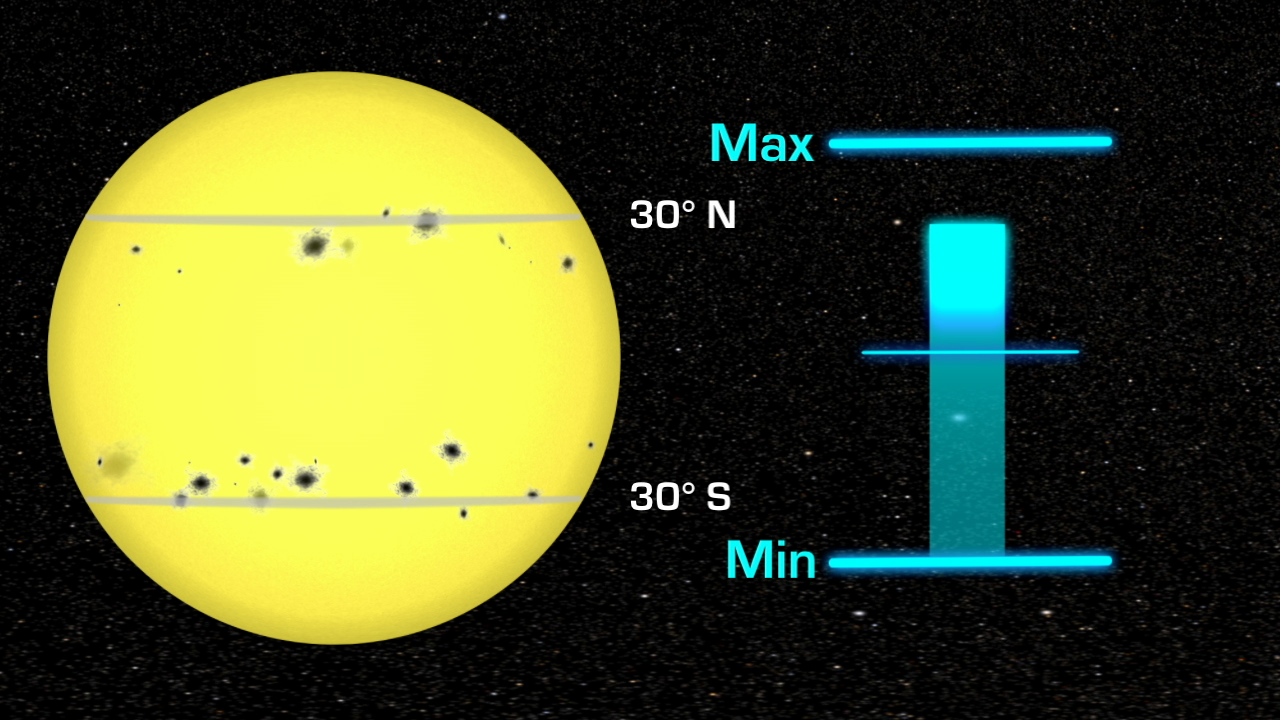Magnetic Hotspots
Sunspots are the relatively cool, dark blemishes that appear on the sun's otherwise super-fiery and flawless surface. To scientists, these planet-sized phenomena indicate the location where strong magnetic fields that power solar flares and coronal mass ejections (CMEs) emerge from the sun's interior. The number of sunspots increases and decreases over time in a regular, approximately 11-year cycle, called the sunspot cycle. During each cycle sunspots migrate from the sun's mid-latitude regions towards the equator, with the highest number observed in any given cycle designated "solar maximum" and the lowest number designated "solar minimum." Each cycle varies dramatically in number, with some solar maxima being so low as to be almost indistinguishable from the preceding minimum. Learn more about the sunspot cycle and see actual footage of sunspots in the videos below.

Like clockwork, dark spots the size of Earth speckle our sun.
Traveling sunspots are seen by NASA's Solar Dynamics Observatory (SDO) satellite from Oct. 25 to 27, 2010.
Sunspots arise from the constantly changing magnetic fields inside the sun.

Near solar minimum, the sun's magnetic field lines are straight and simple.

Near solar maximum, the sun's magnetic field lines get more complex as the magnetic material inside stretches and twists.

Eleven years in the life of the sun, progressing from solar minimum (upper left) to maximum and back to minimum (upper right) again.
For More Information
See NASA.gov
Credits
Please give credit for this item to:
NASA's Goddard Space Flight Center
-
Animators
- Scott Wiessinger (USRA)
- Walt Feimer (HTSI)
- Tom Bridgman (Global Science and Technology, Inc.)
-
Video editor
- Scott Wiessinger (USRA)
-
Narrator
- Karen Fox (ADNET Systems, Inc.)
-
Producer
- Scott Wiessinger (USRA)
-
Videographer
- Rob Andreoli (Advocates in Manpower Management, Inc.)
-
Writer
- Karen Fox (ADNET Systems, Inc.)
Release date
This page was originally published on Thursday, December 22, 2011.
This page was last updated on Wednesday, May 3, 2023 at 1:53 PM EDT.

